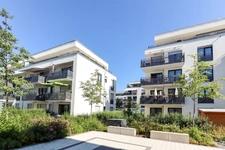Investing in student housing remains one of the safest and most profitable real estate assets in France. With a constantly rising rental demand and attractive yields, it appeals to both first-time and experienced investors. However, to succeed and secure long-term profitability, it is essential to understand the market, tax implications, and partner with the right professionals.
Why Invest in Student Housing in 2025–2026?
Investing in student accommodation in 2025–2026 presents a solid opportunity for individuals looking to grow their real estate assets and secure stable rental income. With over 3 million students in France and a significant housing shortage, demand remains structurally high. Moreover, student housing offers higher returns than many other segments of the property market, making it an appealing option for investors seeking both security and performance.
A Steadily Growing Student Rental Demand
Each academic year highlights the increasing strain on the student housing market. In 2025–2026, university enrollments continue to rise, particularly in major student hubs such as Paris, Lyon, Toulouse, Lille, and Nantes.
This surge generates structural rental demand that far exceeds available supply, creating a lasting shortage. Independent units (such as studios and furnished one-bed apartments) are especially popular, as students increasingly seek private living spaces.
For investors, this strong demand guarantees high occupancy rates and reduces vacancy risk. In addition, student rent is often secured by financial guarantors (parents, bank guarantees, or the Visale scheme), which minimizes the risk of missed payments.
High-Yield Geographic Areas
While major cities attract a large share of students, mid-sized university towns now offer significant investment opportunities. These cities combine lower property prices with gross rental yields that often exceed those in major regional capitals.
Cities such as Angers, Poitiers, Montpellier, or Rennes feature strong student demand, relatively affordable purchase prices, and solid rental prices driven by a shortage of supply.
Proximity to campuses, transportation, and amenities remains a key factor: a property located just minutes from a university or training center will rent faster and command higher rates. For investors, this translates into a profitable, secure long-term investment with resale value potential.
What Are the Main Types of Student Housing Investments?
There are several ways to invest in student accommodation, each with its own benefits, constraints, and yield levels. The best choice depends on your budget, location, and long-term asset strategy. The most common options include serviced student residences, independent furnished studios, and shared apartments for student flatshares.
Investing in a Student Residence: A Turnkey Solution
Serviced student residences are increasingly popular as they offer a hassle-free solution for investors. These new-build developments, often located near universities, offer furnished units with amenities such as Wi-Fi, laundry rooms, communal lounges, and security.
Investors typically benefit from LMNP (Non-Professional Furnished Rental) tax status, which provides favorable tax treatment, including depreciation and VAT recovery on the purchase price. In most cases, property management is handled by a professional operator, simplifying ownership.
Average yields range between 3.5% and 5%, with reduced vacancy risk due to high demand. However, it's crucial to assess the operator’s reliability and the development's location before investing.
Furnished Studio: A Traditional and Profitable Investment
The furnished studio is the most classic form of student accommodation. Ranging from 15 to 25 m², it meets the needs of students looking for a functional, independent, and affordable space.
Investors can choose between new or existing properties depending on their budget and strategy. Furnished rentals benefit from favorable LMNP tax rules (real regime), which allow deduction of expenses (loan interest, renovation, management fees) and depreciation.
In large university cities, a well-located furnished studio can deliver gross yields between 4% and 7%, with steady rental demand. For students, it's often a more affordable and independent alternative to serviced residences.
Student Flatshare: Optimized Yield for Large Apartments
Student flatsharing is gaining popularity among both students and investors. This strategy involves converting a large apartment (T3, T4 or larger) into several private bedrooms while sharing common areas (kitchen, living room, bathroom).
The main advantage for investors is higher rental yield, which can reach 6% to 8% gross in some cities. Since each room is rented individually, vacancy risk is reduced: even if one tenant leaves, the others continue paying their share.
Flatshares also appeal to a broader audience (students, young professionals, apprentices) and are highly attractive in university towns with high rents. However, managing multiple leases and tenant turnover can be more complex.
Advantages and Disadvantages of Investing in Student Housing
Before purchasing a property intended for students, it's essential to weigh the benefits and limitations of this type of investment. While student housing is often seen as a safe bet in major university cities, it also comes with constraints that should not be overlooked.
Advantages of Investing in Student Housing
Student housing attracts many individual investors as it combines profitability and rental security. Here are the main advantages:
Strong rental demand: Every academic year, thousands of students look for accommodation, especially in major cities like Paris, Lyon, Toulouse, Lille, or Montpellier. This market pressure ensures fast turnover and reduces the risk of vacancy.
Higher rent per square meter: Small units (studios, one-room flats, residence rooms) command higher rent per square meter compared to larger properties, which helps maximize rental yield.
Favorable tax incentives: Through the LMNP status (Non-Professional Furnished Rental), investors can depreciate their property and deduct numerous expenses (repairs, loan interest, management fees). In some cases, VAT can even be reclaimed for student residences.
Affordable entry point: The purchase price of small units is usually lower than that of larger properties, making this type of investment more accessible to first-time investors.
Asset diversification: Allocating part of your savings to student housing complements other real estate or financial investments while securing your overall portfolio.
Disadvantages of Investing in Student Housing
While student housing offers real opportunities, it also involves risks and constraints. Key points to watch include:
Frequent tenant turnover: Students rarely stay more than 2 or 3 years in the same property, leading to repeated administrative tasks (check-in/check-out, finding new tenants, drafting new leases).
Faster wear and tear: Small units rented to young tenants often require more frequent maintenance and refurbishing (paintwork, flooring, furniture in the case of furnished units).
More complex management: Especially in shared accommodations, where multiple rental contracts may coexist and tenant rotation requires closer oversight.
Vacancy risk in smaller towns: Unlike major urban areas, some mid-sized markets are less dynamic. A poorly located property could suffer from low demand, especially if the local student housing supply is already high.
Regulatory exposure: LMNP status, rent caps, and evolving tax schemes like Pinel or Denormandie can all impact future profitability.
Tax Schemes and Investment Incentives for Student Housing
One of the key benefits of student housing investment lies in the various tax schemes that help optimize returns. Depending on the property type (furnished studio, student residence, shared flat) and the management method, several tax regimes apply—each with its own pros and cons.
LMNP Status (Non-Professional Furnished Rental) for Student Apartments
The LMNP regime is the most common among student housing investors, as most properties are rented furnished.
Principle: Rental income is declared as BIC (industrial and commercial profits).
Tax advantages: The investor can depreciate the property value, furniture, and renovation works, significantly reducing taxable rental income.
Case of managed residences: When investing in serviced residences (with a commercial lease), VAT (20%) on the purchase price can be reclaimed, lowering acquisition costs.
Example: A student studio bought for €120,000 may generate nearly zero taxable income for several years due to depreciation.
Pinel and Denormandie Schemes for Student Rental Investment
Even though the classic Pinel scheme is being phased out, certain student housing projects may still qualify under similar programs:
Pinel+ (2025–2026): Applies in select high-demand areas, including student housing, provided rent and energy efficiency conditions are met.
Denormandie: Offers tax reductions for the renovation of old properties in city centers, often sought after by students.
These schemes provide income tax reductions proportional to the property price and rental commitment duration (6, 9, or 12 years).
Tax Benefits on Rental Income from Student Housing
Outside specific schemes, student housing can also benefit from standard taxation options:
Micro-BIC: For rental income under €77,700/year, a flat-rate 50% deduction applies (simplified LMNP).
Real regime: Allows actual expenses to be deducted (loan interest, insurance, management fees, maintenance, depreciation). Ideal for long-term investors.
PTZ (Interest-Free Loan): In certain cases (e.g. for a student’s primary residence before renting), subsidized loans can be combined with future rental plans.
Key Factors for a Successful Student Housing Investment
Student housing can be highly profitable, but success requires thorough preparation and strategic decision-making. From location to property management and financing, here are the essentials to consider before you invest.
Choose the Right Location
Location is the #1 success factor for student housing investment. A well-located unit ensures strong and lasting rental demand.
Close to universities and schools: Students prefer accommodations near campuses and public transport.
Access to shops and services: Supermarkets, libraries, dining halls, and gyms all influence a tenant’s decision.
Local market trends: Assess local vacancy rates, average property prices per m², and rent levels in your target city (e.g. Paris, Lyon, Lille, Nantes, Montpellier).
Example: A studio 10 minutes from campus rents within days, while one farther away may sit vacant for weeks.
Plan for Charges and Management Costs
To ensure net profitability, it's important to accurately estimate all costs tied to your investment:
Condo fees: Covering common areas, elevators, heating, etc.
Property management fees: If you outsource rental tasks to an agency or professional operator.
Insurance: Property and rent guarantee insurance (GLI) to secure your rental income.
Maintenance: Paint touch-ups, appliance replacement, furniture updates…
Tip: In managed student residences, many of these costs are included in the commercial lease, simplifying management.
Optimize Financing and Taxation
A successful investment also depends on your financial setup and tax strategy:
Bank loan: Favor a fixed-rate mortgage with a duration of 15–20 years.
Down payment: A 10–20% down payment reassures lenders while preserving liquidity for other projects.
Tax optimization: The real LMNP regime often cancels out rental income taxes via depreciation.
Simulation tip: Before buying, perform a net cash flow simulation including rent, loan payments, expenses, and taxes.
By applying these strategic guidelines, investors can secure their project and target a net annual return of 3% to 6% while building long-term real estate wealth.
Pitfalls to Avoid for a Successful Student Housing Investment
Even though student housing offers attractive returns, some pitfalls can compromise the success of your real estate project. To secure your investment and avoid unpleasant surprises, here are the most common mistakes to avoid.
Neglecting Local Market Analysis
One of the main risks is investing in a city with too few students or in a poorly connected neighborhood.
Too much competition can lead to prolonged vacancy.
A poor location (far from campus, transport, or amenities) will make the property less attractive.
Buying without analyzing local statistics (number of students, housing supply, average rents) is a common mistake.
Example: In a small university town where supply exceeds demand, yields may drop below 2%.
Overestimating Net Return
Many investors rely solely on the advertised gross rent without accounting for hidden charges and costs:
Management fees in student residences (sometimes 20–25% of the rent).
High condominium fees in some modern buildings.
Regular renovation or compliance costs.
Poorly anticipated tax burdens that reduce net returns.
Tip: Always calculate net return after costs and taxes—not just gross yield.
Ignoring Lease and Property Management Aspects
A poorly drafted lease or inadequate rental management can quickly result in financial losses.
Student leases (9 months) require good anticipation of tenant turnover.
In shared accommodation, include a joint liability clause between tenants to limit unpaid rent risks.
Not having a rent guarantee insurance (GLI) may jeopardize your rental income.
Example: A student rental without GLI exposes you to several months of unpaid rent if the tenant faces financial hardship.
Investing Without Comparing Tax Options
Failing to compare tax regimes (LMNP, Censi-Bouvard, actual regime, micro-BIC) is a common mistake. Choosing the wrong one can significantly reduce profitability and limit asset optimization.
Tip: Consult a wealth advisor or chartered accountant to choose the most suitable tax regime for your project.
By avoiding these classic pitfalls, investors give themselves the best chance of success and can achieve a stable, long-term return while minimizing risks.
Student Housing Market Trends in 2025–2026
The student housing market in France continues to evolve under the influence of demographic growth, social changes, and fiscal reforms. To make a successful investment, it’s essential to understand the key 2025–2026 trends shaping supply and demand.
Demand Continues to Grow
France will have nearly 3 million students in 2025, with growth expected in health, engineering, and international programs.
Foreign students (around 400,000 in 2025) represent a growing share of demand, especially in Paris, Lyon, Toulouse, and Lille.
Student mobility remains high: most prefer small furnished homes near universities and public transport.
Result: Student rental pressure is expected to remain high, particularly in major university cities.
The Rise of Mid-Sized Cities
While Paris, Lyon, and Toulouse remain safe bets, more investors are turning to attractive mid-sized cities:
Angers, Poitiers, Reims, and Dijon show net returns above 4.5%, with still-affordable property prices.
The development of TGV rail lines and remote work is encouraging students to consider better-connected, less expensive secondary cities.
Local governments are supporting modern student residence developments to attract and retain students.
Opportunity: These cities often offer a better price/yield ratio than saturated large cities.
Rising Rents in Major Cities
In Paris, the average rent for a student studio now exceeds €950 per month.
In major cities like Lyon, Bordeaux, or Nantes, annual increases average between +2% and +4%.
Renovated, energy-efficient homes are rented faster and for more money, due to new energy performance regulations (DPE).
Tip: Choose properties with strong energy performance to anticipate legal changes and maximize rental value.
The Emergence of New Student Housing Formats
Hybrid residences: Combining student housing, coliving, and coworking.
Shared housing (colocation): A growing trend to reduce costs and share spaces.
Smart homes: Domotics, shared amenities, and integrated services are becoming key factors for the 2025–2026 generation.
Investing in these innovative formats helps capture evolving demand and stand out in the market.
A Still Favorable Tax Environment
Despite the gradual end of the Pinel scheme, several tax regimes (LMNP, land deficit, Loc’Avantages) remain highly attractive in 2025–2026.
LMNP remains popular thanks to depreciation and low-tax rental income.
Land deficit applies especially to old properties needing renovation.
Loc’Avantages offers a tax reduction for landlords who rent below market rates.
Conclusion: Tax benefits remain a real asset for investors—provided they choose the right regime for their financial goals.
This section confirms that student housing remains a future-proof investment in 2025–2026, but that it’s essential to adapt to demographic, urban, and tax trends.
Optimhome Advisors Support You at Every Step of Your Investment
Investing in student housing involves multiple stages: selecting the property, financing, letting, property management, and taxation. Optimhome real estate advisors support you at every step of your project.
For Your Real Estate Purchase
Our experts guide you toward the best properties suited to the student market (student residences, studios, shared housing), tailored to your investment goals and budget.
For Rental Management
Optimhome offers professional solutions to ensure fast letting, strict tenant selection, and secure rent collection.
For Property Sales
Get a professional property valuation and benefit from the full range of sale and marketing services to sell your property under the best conditions with your local Optimhome advisor.
Thanks to this personalized support, you can optimize your student housing investment and secure your rental income.
Conclusion: Key Takeaways
Student housing demand will remain strong in 2025–2026, especially in major university cities and certain attractive mid-sized cities.
Multiple investment formats are available: student residences, furnished studios, and shared flats—each with its own advantages.
Tax regimes (LMNP, land deficit, Loc’Avantages) still offer powerful levers to optimize returns.
Common pitfalls include poor location choices, low energy performance, and high vacancy risks.
Working with an Optimhome advisor is a decisive advantage to secure your purchase and rental management.
FAQ: Investing in Student Housing
Is it profitable to buy a student apartment?
Yes, investing in a student apartment is generally profitable due to strong rental demand and proportionally high rents. Net returns average between 4% and 6%, depending on the property's location and management.
Where should you invest in student housing?
Major university cities like Paris, Lyon, Toulouse, Lille, Nantes, and Montpellier offer steady demand. However, some mid-sized cities with a large student population (Angers, Poitiers, Dijon) can provide higher returns and lower vacancy rates.
Why invest in student housing?
Investing in student housing lets you benefit from structurally strong rental demand, diversify your property portfolio, and take advantage of favorable tax schemes. It’s both a profitable and secure long-term investment.
What type of property is best for students?
Furnished studios and student residences are the most popular formats because they offer convenience and tailored services. Large shared apartments are also increasingly popular for students looking for affordability and community living.
What is the tax regime for student housing?
The most common tax regimes include LMNP (non-professional furnished rental), land deficit, and Loc’Avantages. These allow investors to reduce their taxes while maximizing rental profitability.
What are the risks of investing in student housing?
The main risks involve poor location, prolonged vacancy, or high expenses compared to the rental income. A detailed market study and the support of a real estate advisor can help minimize these risks.
Also on Our Real Estate Blog:
- Addiction to Real Estate Listings: A Common Phenomenon in 2025
- How Many Viewings on Average to Sell a House in France?
Author of the Publication

Fabrice DOBROWOLSKI, Network Development Director at Optimhome
"Take advantage of my expert advice, based on many years of experience in real estate, to ensure the success of your buying or selling project."











